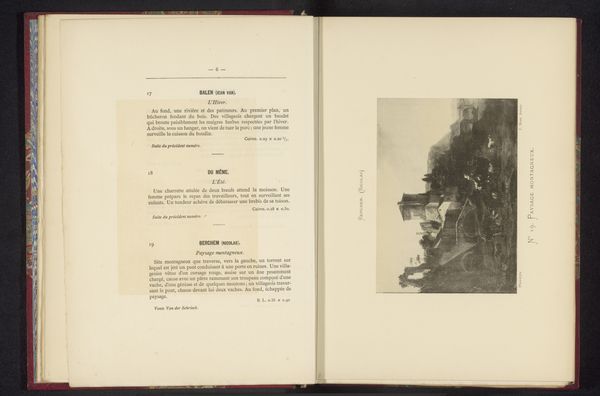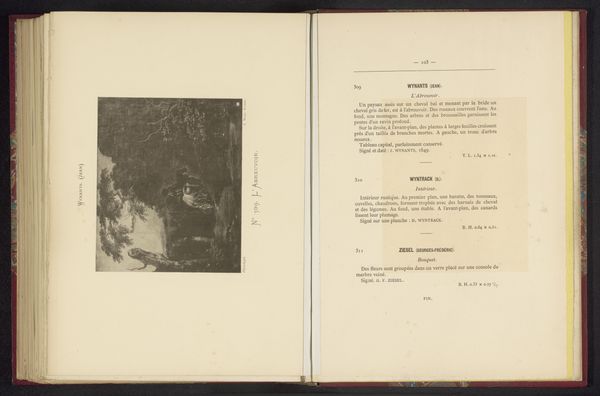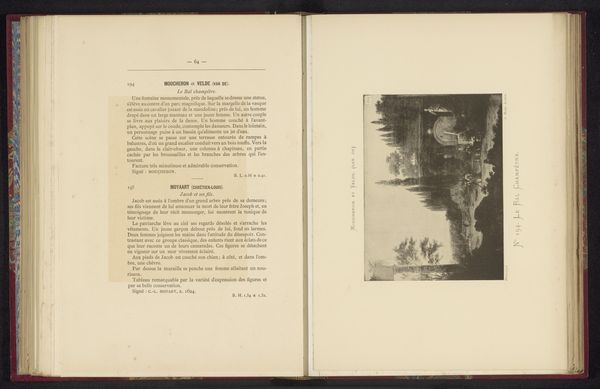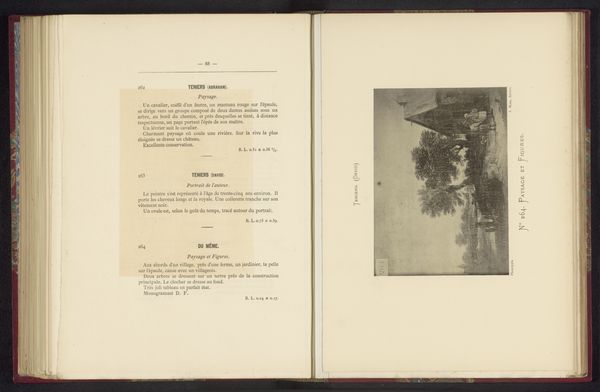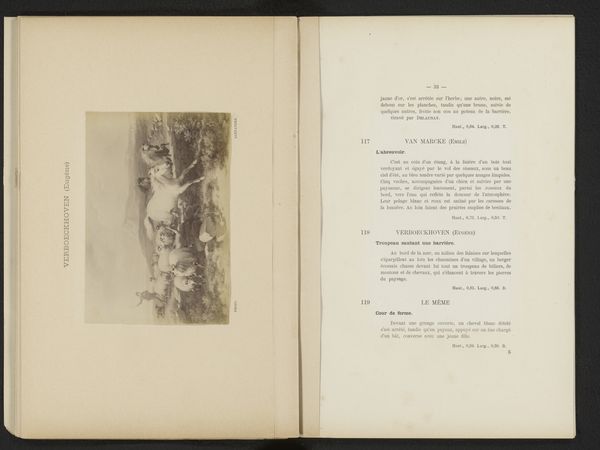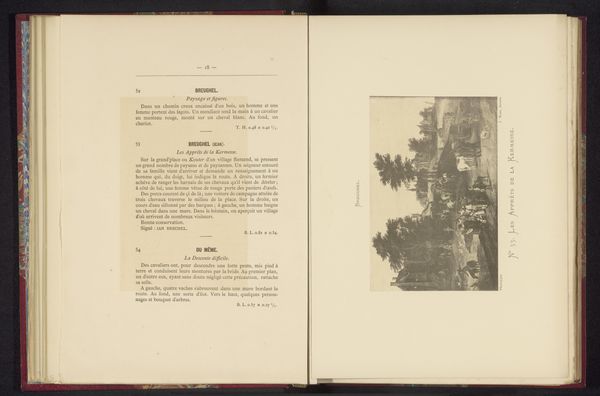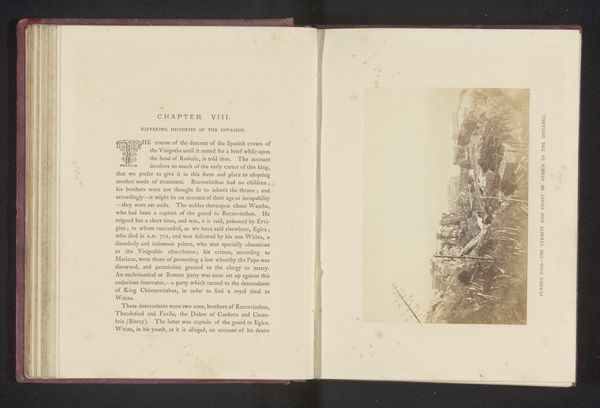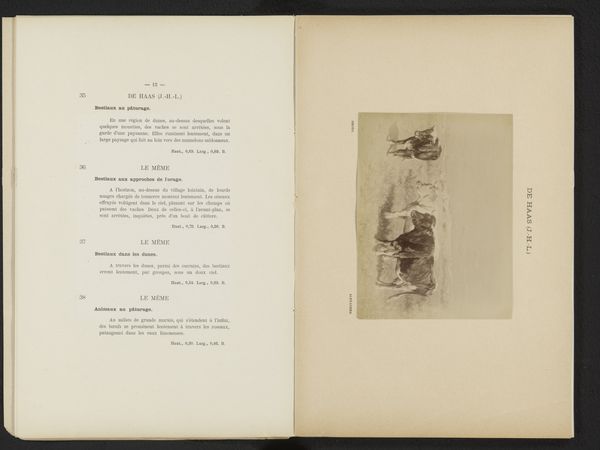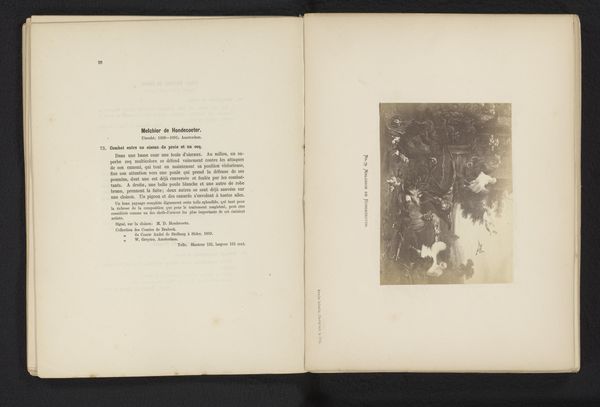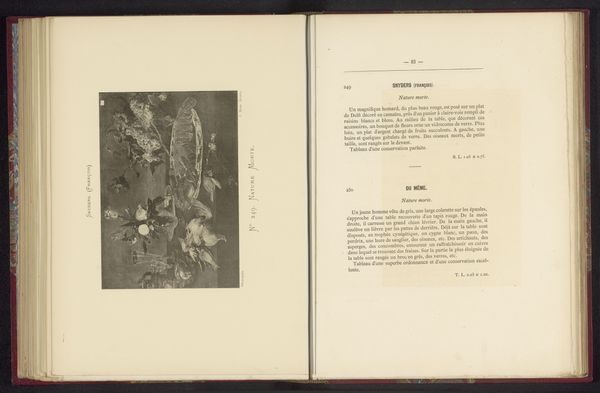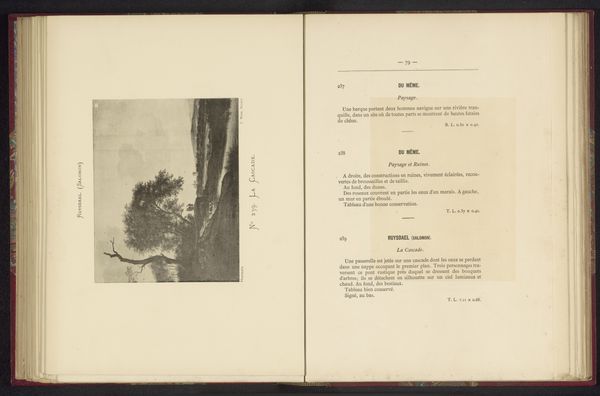
Reproductie van een schilderij van een landschap met een rivier van Solomon Rombouts before 1883
0:00
0:00
# print
#
landscape
#
realism
Dimensions: height 121 mm, width 167 mm
Copyright: Rijks Museum: Open Domain
Curator: This is a reproduction of a painting of a landscape with a river by Solomon Rombouts, dating from before 1883. The medium is print. Editor: There's a sense of romantic wilderness here, almost dreamlike. The composition is dramatic, the dark tones contrasting with hints of light. It has an undeniably melancholic aura. Curator: The original would likely have been an oil on canvas. It's fascinating to consider the process of translation, from brushstrokes to a printed image. This print offered a more accessible means of distributing Rombouts' landscape vision. It reflects the rise of reproductive technologies democratizing access to imagery. Editor: I am drawn to the interplay of the forms. The swirling river in the landscape pulls the eye, flanked by dark vegetation and that towering rock face. It’s about creating depth, wouldn’t you say, achieving the feeling of an expansive space? Curator: Absolutely. We can talk about space but we have to think about the production. I’d ask what were the working conditions of the printer. Were there social implications? Think about how Rombouts sold this image of his landscape and to whom. Editor: All essential questions to understanding its place within a socio-economic system. Curator: But those contrasts in the composition that you are focusing on do more than make that spatial construction as you call it; the darkness is foreboding and perhaps even sinister. Rombouts doesn't present us a pleasant, pastoral view here. There's something ominous suggested in nature. Editor: Yes, a kind of sublime terror mixed with a touch of romantic yearning, an artist working with these ideas before those who may be more associated. This print serves not only to disseminate the artistic style, but to spread this aesthetic even more widely. Curator: Indeed. It shows that art history is often about understanding how objects participate in material processes and markets, spreading aesthetics across socioeconomic groups. Editor: Studying art history should not focus purely on the artwork alone but include cultural, economic and historical lenses too. Curator: Exactly.
Comments
No comments
Be the first to comment and join the conversation on the ultimate creative platform.

